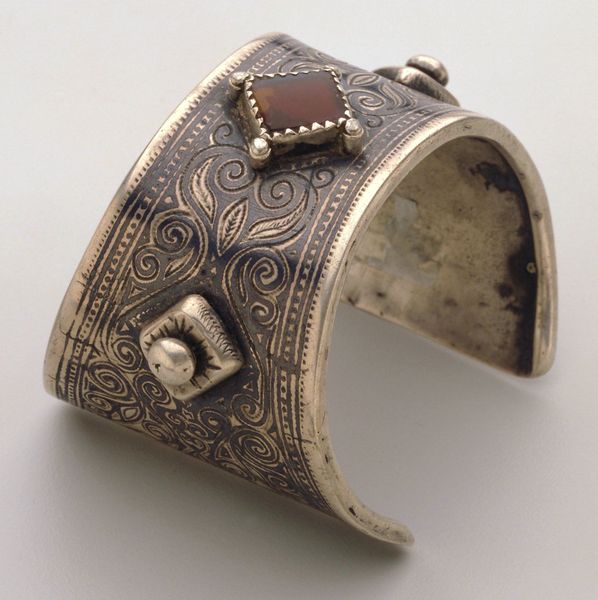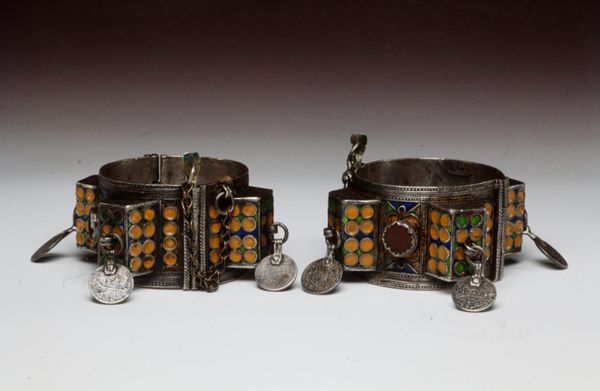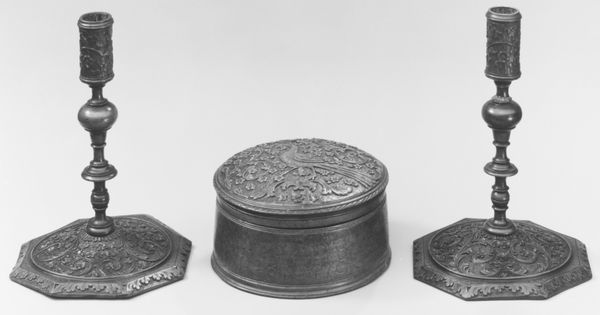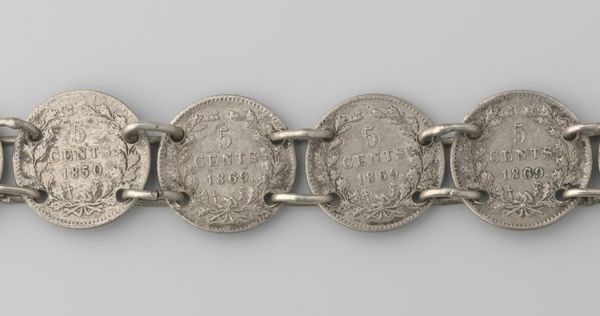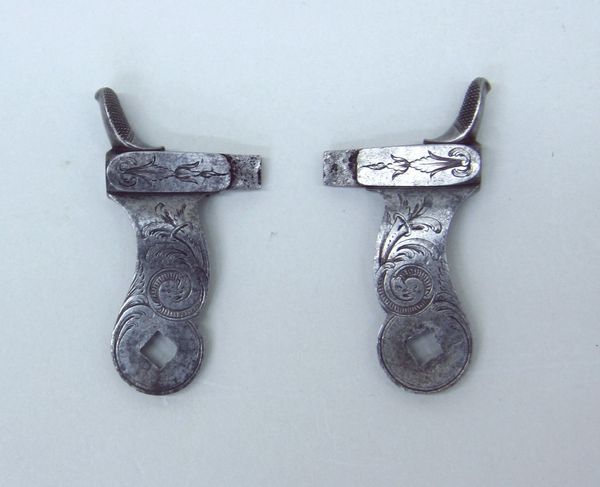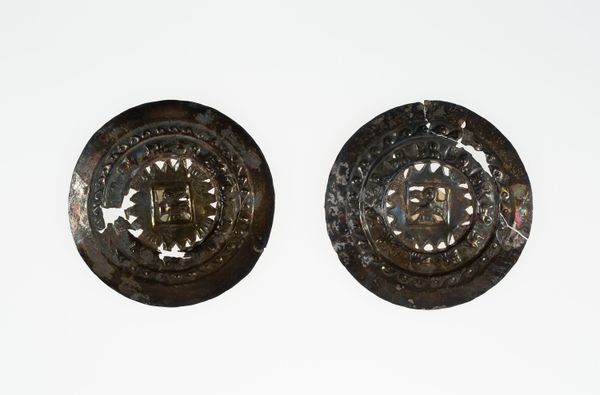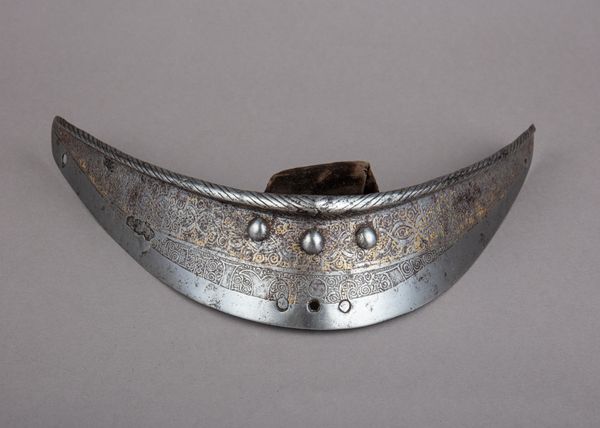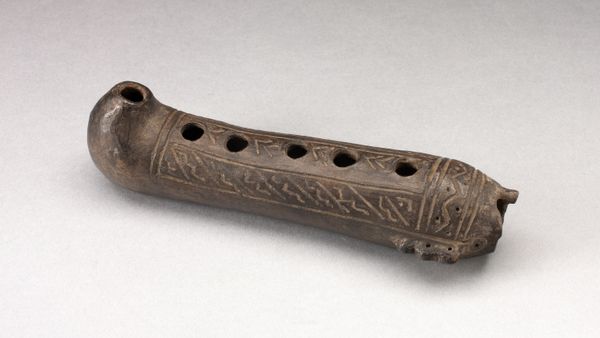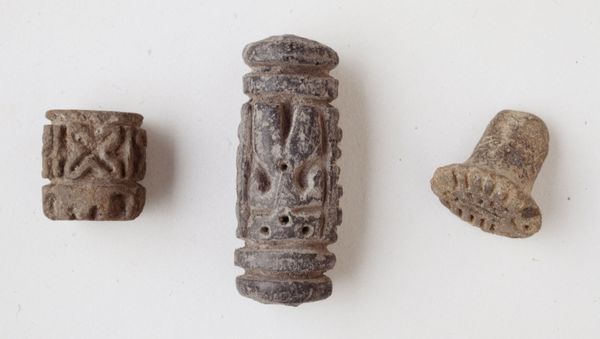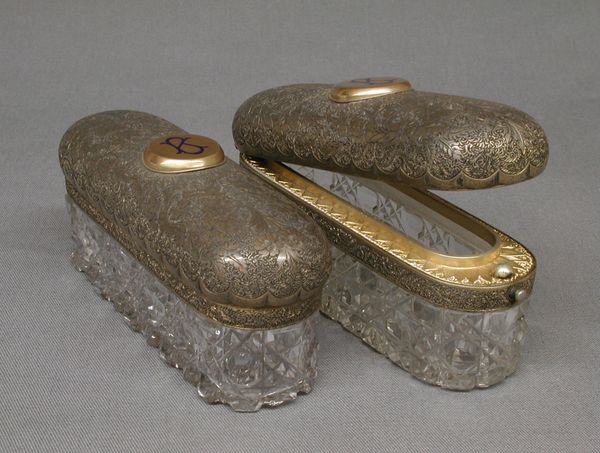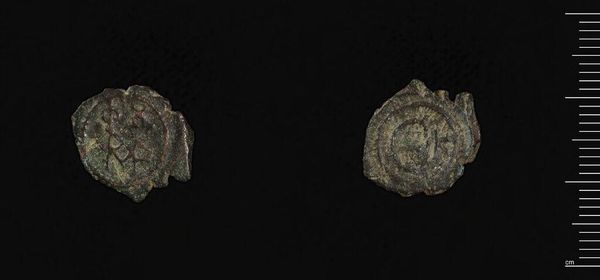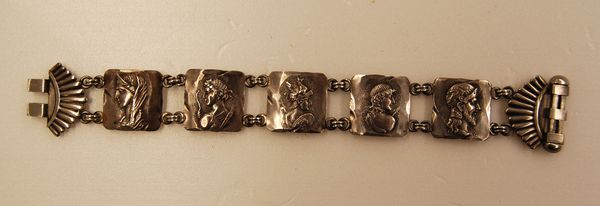
silver, metal, gold, sculpture
#
silver
#
metal
#
sculpture
#
gold
#
geometric
#
sculpture
#
decorative-art
Copyright: Public Domain
Curator: Here we have a set of decorative-art pieces titled "Belt Buckle and Anklets," created in 1832 by an anonymous artist. The materials used are gold and silver on metal. You'll find this display at the Minneapolis Institute of Art. Editor: They look quite intricate. My immediate impression is their exquisite detailing – they project a feeling of restricted status and rigid conformity. The heavy materials give me a sense of immobility. Curator: Yes, the workmanship is astonishing, particularly the filigree patterns. It shows mastery of symmetry, repetition, and precise execution within the floral motifs. Note how these formal elements evoke classicism. Editor: I think it is important to remember, while focusing on these visual forms, that jewelry and belts were and still are not only about personal adornment, but they signal social identity and play a significant role in rituals and customs within particular cultural contexts. Who would have worn these, and under what societal expectations? Curator: A fair point, but I am more fascinated by how these specific elements work in conjunction, formally speaking. See how the gleam of the gold interacts with the cool shine of silver? A striking example of texture contrast. Editor: I read this piece in terms of class and social constraint. The sheer preciousness would have placed the wearer in a tight web of expectation and surveillance. We are only seeing static metal. To know their context and owner gives voice to the silenced figures from our historical records. Curator: It certainly grants a certain richness to this analysis, offering layers beyond surface appraisal. I am also now more acutely aware of what is not explicitly visible in the frame—the cultural ecosystem giving these pieces life and use. Editor: Considering its display behind glass here at the MIA, its past has lost much of its context, but contemplating social dynamics can allow us, to some degree, to recover parts of a richer story.
Comments
minneapolisinstituteofart about 2 years ago
⋮
In the past, Muslims in Morocco declined to engage in smithing, allowing their Jewish neighbors to take up the trade instead. One of the reasons was the popular belief that working with fire exposed them to the wrath of harmful invisible beings called jinn. For many centuries, Jewish artisans in the coastal town of Essaouira dominated the metalworking industry—this pair of anklets was made there in 1832—though most have since left the country and been replaced by Muslims.
Join the conversation
Join millions of artists and users on Artera today and experience the ultimate creative platform.
